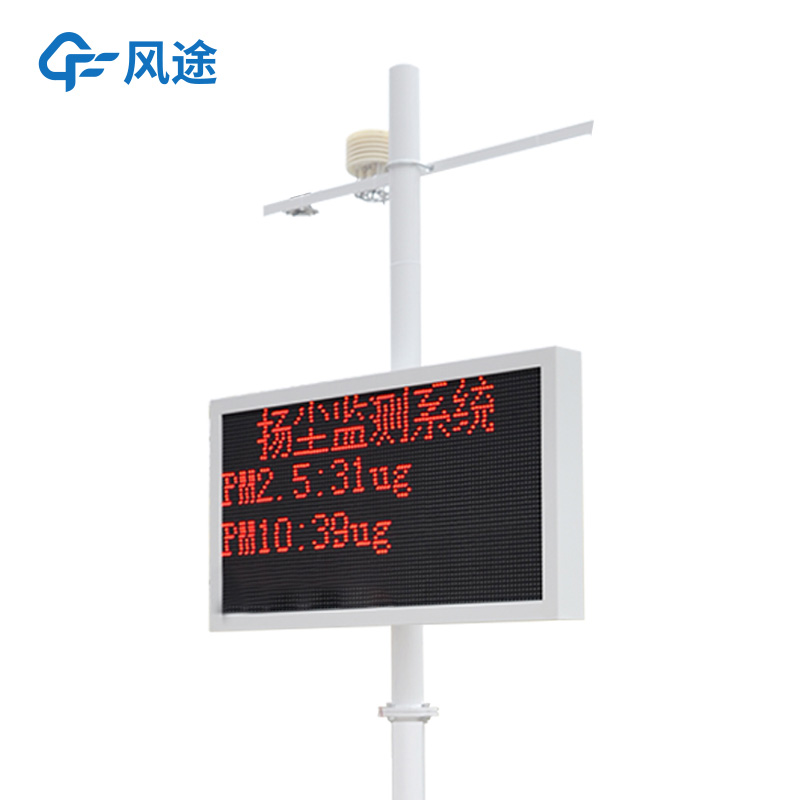Tianyi Sensor IOT Technology Co., Ltd
Sales Manager:Ms. Emily Wang
Cel,Whatsapp,Wechat:+86 15898932201
Email:info@fengtutec.com
Add:No. 155 Optoelectronic Industry Accelerator, Gaoxin District, Weifang, Shandong, China

Sales Manager:Ms. Emily Wang
Cel,Whatsapp,Wechat:+86 15898932201
Email:info@fengtutec.com
Add:No. 155 Optoelectronic Industry Accelerator, Gaoxin District, Weifang, Shandong, China
time:2025-09-30 09:06:55 source:Weather Station viewed:131 time
With the rapid advancement of urbanization, construction sites, road works, and material storage yards are scattered across various corners of cities. During construction and operation, these sites inevitably generate environmental pollutants: dust and noise.
A dust detector is an intelligent device capable of monitoring the concentration of particulate matter (such as PM2.5, PM10, and TSP) and noise levels in the environment in real time, continuously, and automatically. It can also transmit data to a monitoring center via wireless networks. These devices are installed in locations requiring environmental monitoring, such as construction sites, urban roads, industrial parks, and ports.
The dust monitoring module primarily employs the laser scattering method. A laser beam inside the instrument irradiates particulate matter in the air, causing the laser to scatter. By measuring the intensity of the scattered light and processing it through algorithms, the number and mass concentration of particulate matter per unit volume can be derived, yielding parameters such as PM2.5 and PM10.
The core of the noise monitoring module is a high-precision microphone (sensor) that captures sound wave vibrations in the air and converts them into electrical signals. The internal circuitry of the instrument processes and analyzes these electrical signals, calculating noise indicators such as the equivalent continuous sound level (Leq) in accordance with international standards (e.g., A-weighted sound level).
To more comprehensively analyze the diffusion conditions of pollutants, many devices are also equipped with integrated meteorological sensors to monitor wind speed, wind direction, temperature, humidity, atmospheric pressure, and other factors.
For monitoring points without access to grid electricity, solar panels and batteries are provided to achieve energy self-sufficiency.
Built-in 4G/5G or NB-IoT communication modules package the data and automatically upload it to cloud platforms or government regulatory platforms at set intervals (e.g., every 1 minute or 5 minutes).

Portable Flow Meter is a velocity and flow rate detection instrument applied to rivers, open channels, pipelines and other working conditions. Utilizing ultrasonic detection technology, it features high measurement accuracy, good stability, little influence from environmental factors, no rotating pa...
In the process of coal mine production, wind measurement work is of great importance. The space underground in coal mines is relatively enclosed, and there are flammable and explosive substances such as gas and coal dust. Reasonable ventilation can effectively dilute and discharge gas, reduce the ga...
Handheld weather stations provide convenience for people to obtain meteorological data anytime and anywhere. Among them, mechanical handheld weather stations and ultrasonic handheld weather stations are two common types. What are the differences between them? How should consumers choose?Differences...
After long-term use, photovoltaic modules are prone to various defects. Issues such as microcracks and degradation can seriously affect power generation efficiency and the lifespan of the system. This is where the EL detector, a photovoltaic operation and maintenance device, comes into play. It is a...